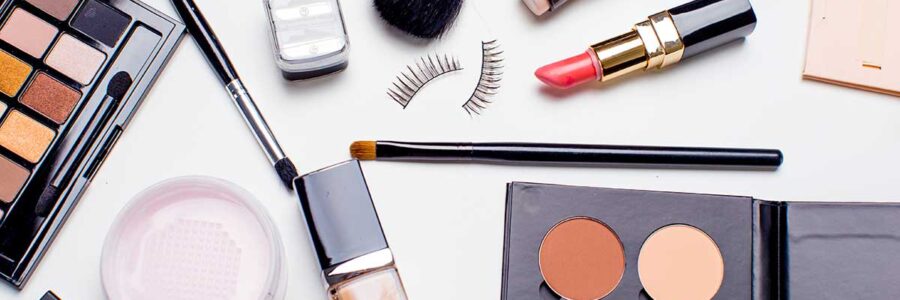In a world where self-care and beauty routines are celebrated, it is alarming to realize that many daily products may contain potentially harmful chemicals. Makeup, a staple in many people’s daily lives, is no exception. Despite the growing awareness about clean beauty, the industry remains largely unregulated, allowing numerous products to contain ingredients linked to severe health issues, such as cancer, reproductive harm, and neurological damage.
The Unseen Dangers in Everyday Makeup
The U.S. cosmetics market has experienced remarkable growth, yet the laws regulating it have yet to keep pace. The last major legislation, the Food, Drug, and Cosmetic Act, was enacted in 1938. Since then, the industry has grown from $1 billion in sales to over $169 billion by 2016. However, only a small fraction of the thousands of chemicals used in cosmetics have been reviewed or regulated by the FDA. This regulatory gap leaves consumers vulnerable to unknowingly exposing themselves to toxins through their daily makeup routines.
The Toxic Twelve
Among the most concerning are the “Toxic Twelve” chemicals. These include formaldehyde, parabens, phthalates, and PFAS, which are linked to a myriad of health problems, from hormonal disruptions to cancer. Shockingly, many of these substances can be listed on product labels if they are separate from a fragrance blend, leaving consumers unaware of their presence.
The Health Impact
Cosmetics and personal care products are subject to less government oversight than any other consumer product category. Since 2009, 595 cosmetics manufacturers have reported using 88 chemicals in more than 73,000 products that have been linked to cancer, congenital disabilities, or reproductive harm. The Toxic-Free Cosmetics Act, proposed in California Assembly Bill 2762, aims to ban many of these chemicals from cosmetics.
Formaldehyde and Its Derivatives
Formaldehyde and its derivatives, like methylene glycol and quaternion-15, are used as preservatives and hardening agents. They are known carcinogens that can cause respiratory issues and skin irritation and have been linked to certain types of cancer.
Phthalates
Phthalates, such as dibutyl phthalate and diethylhexyl phthalate, are endocrine disruptors that interfere with hormone functions. These chemicals are associated with reproductive and developmental issues, including early puberty in boys, reduced fertility, and developmental problems in fetuses.
Parabens
Parabens, commonly used as preservatives, mimic estrogen in the body, potentially leading to hormonal imbalances. This can increase the risk of breast cancer and negatively affect reproductive health.
Mercury and PFAS
Mercury, found in some skin-lightening creams and anti-aging products, can damage the kidneys and nervous system. PFAS, used for their water- and grease-resistant properties, have been linked to cancer, immune system damage, and developmental issues in children.
Short-term Effects
Short-term exposure to these chemicals can also be severe, including allergic reactions, skin irritation, and respiratory problems. Methylene glycol and quaternion-15, which release formaldehyde, can cause immediate adverse reactions like rashes, eye irritation, and difficulty breathing. Hair dyes containing m- and o-phenylenediamine can irritate and sensitize the skin, damage DNA, and are potential carcinogens.
Real-Life Consequences
The impact of these toxic chemicals is more than merely theoretical. Consumers have reported various adverse effects, from mild irritations to severe health problems. Formaldehyde-based hair treatments have been linked to hair loss, rashes, blisters, nosebleeds, and even loss of taste and smell. Makeup products contaminated with heavy metals, such as lead and arsenic, can lead to chronic poisoning, affecting multiple organ systems over time.
Cumulative Exposure
The cumulative exposure to these chemicals is concerning. American women use an average of 12 personal care products daily, containing 168 different chemicals, while men use six products with 85 chemicals. This constant exposure increases the likelihood of adverse health effects, especially considering the potential for these chemicals to interact in unknown ways.
Ingredients to Avoid
Certain chemicals should be outright avoided in cosmetics:
- Formaldehyde: A known carcinogen.
- Paraformaldehyde and Methylene Glycol: Types of formaldehyde.
- Quaternium-15: Releases formaldehyde.
- Mercury: Damages the kidneys and nervous system.
- Dibutyl and Diethylhexyl Phthalates Disrupt hormones and damage the reproductive system.
- Isobutyl and Isopropyl Parabens: Disrupt hormones and harm the reproductive system.
- PFAS: Linked to cancer.
- M- and o-Phenylenediamine: Used in hair dyes, irritates and sensitizes the skin, damages DNA, and can cause cancer.
The Push for Stricter Regulations
The cosmetics industry has historically resisted meaningful oversight. Despite consumer demand for safer products, it remains largely self-regulated. Many consumers mistakenly believe that the FDA reviews cosmetic substances, which is not the case. Consumers overwhelmingly support federal oversight.
The Shift Towards Non-Toxic Alternatives
Given the risks, seeking safer, non-toxic makeup alternatives is crucial. Several brands are committed to transparency and safety, offering high-quality products without harmful ingredients:
- Crunchi: Offers toxin-free makeup made from safe, certified organic ingredients and packaged in eco-friendly materials.
- Ilia: Provides effective, non-toxic makeup products that focus on sustainable practices.
- Beauty By Earth: Known for natural and organic ingredients, ensuring safe daily use.
- Kosas: Combines safe, non-toxic ingredients with high-performance makeup.
Switching to these brands can significantly reduce exposure to harmful chemicals, allowing for a safer beauty routine.
Conclusion
The lack of regulation in the cosmetics industry means that many popular makeup products contain harmful chemicals that pose serious health risks. As awareness grows, making informed choices about our products is essential. By supporting legislation like the Toxic-Free Cosmetics Act and choosing safer, non-toxic alternatives, consumers can protect their health and advocate for a safer beauty industry. It’s time to cancel harmful makeup products and embrace healthier alternatives.
References:
- U.S. Food and Drug Administration (FDA). (1938). Food, Drug, and Cosmetic Act. https://www.fda.gov/regulatory-information/laws-enforced-fda/food-drug-and-cosmetic-act-fdc-act
- Statista. (2017). “Size of the U.S. cosmetics market from 2013 to 2025.” https://www.statista.com/statistics/282531/us-cosmetics-market-size/
- Environmental Working Group (EWG). (n.d.). “FDA Authority Over Cosmetics.” https://www.ewg.org/skindeep/contents/about-page/#authority
- EWG. (n.d.). “Skin Deep® Cosmetics Database.” https://www.ewg.org/skindeep/
- Centers for Disease Control and Prevention (CDC). (2020). “Phthalates Fact Sheet.” https://www.cdc.gov/biomonitoring/Phthalates_FactSheet.html
- FDA. (2019). “Tattoos & Permanent Makeup: Fact Sheet.” https://www.fda.gov/cosmetics/cosmetic-products/tattoos-permanent-makeup
- National Institutes of Health (NIH). (2017). “Formaldehyde and Cancer Risk.” https://www.cancer.gov/about-cancer/causes-prevention/risk/substances/formaldehyde/formaldehyde-fact-sheet
- U.S. House of Representatives. (2020). “H.R.5279 – Toxic-Free Cosmetics Act.” https://www.congress.gov/bill/116th-congress/house-bill/5279


